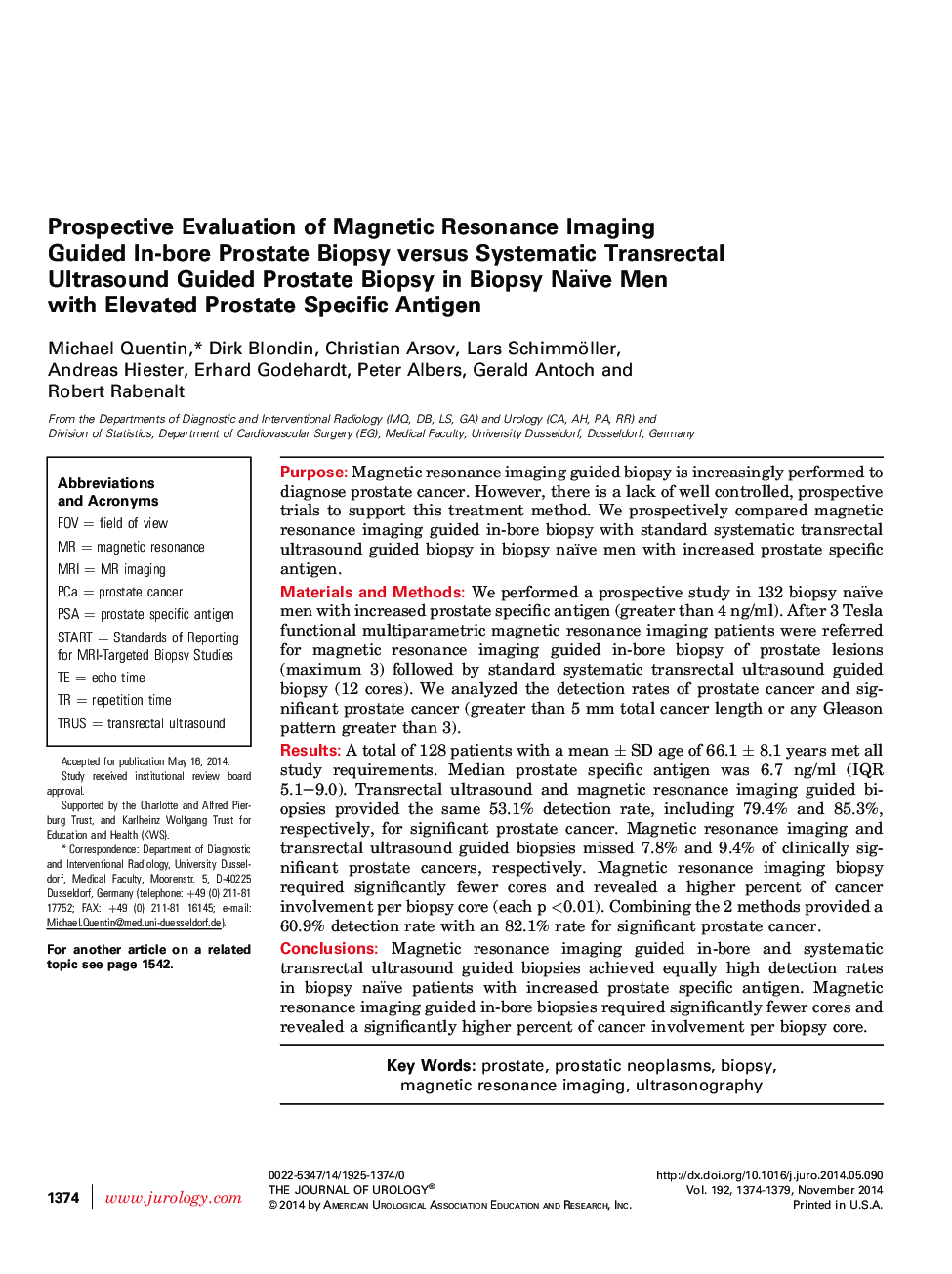| Article ID | Journal | Published Year | Pages | File Type |
|---|---|---|---|---|
| 3863883 | The Journal of Urology | 2014 | 6 Pages |
PurposeMagnetic resonance imaging guided biopsy is increasingly performed to diagnose prostate cancer. However, there is a lack of well controlled, prospective trials to support this treatment method. We prospectively compared magnetic resonance imaging guided in-bore biopsy with standard systematic transrectal ultrasound guided biopsy in biopsy naïve men with increased prostate specific antigen.Materials and MethodsWe performed a prospective study in 132 biopsy naïve men with increased prostate specific antigen (greater than 4 ng/ml). After 3 Tesla functional multiparametric magnetic resonance imaging patients were referred for magnetic resonance imaging guided in-bore biopsy of prostate lesions (maximum 3) followed by standard systematic transrectal ultrasound guided biopsy (12 cores). We analyzed the detection rates of prostate cancer and significant prostate cancer (greater than 5 mm total cancer length or any Gleason pattern greater than 3).ResultsA total of 128 patients with a mean ± SD age of 66.1 ± 8.1 years met all study requirements. Median prostate specific antigen was 6.7 ng/ml (IQR 5.1–9.0). Transrectal ultrasound and magnetic resonance imaging guided biopsies provided the same 53.1% detection rate, including 79.4% and 85.3%, respectively, for significant prostate cancer. Magnetic resonance imaging and transrectal ultrasound guided biopsies missed 7.8% and 9.4% of clinically significant prostate cancers, respectively. Magnetic resonance imaging biopsy required significantly fewer cores and revealed a higher percent of cancer involvement per biopsy core (each p <0.01). Combining the 2 methods provided a 60.9% detection rate with an 82.1% rate for significant prostate cancer.ConclusionsMagnetic resonance imaging guided in-bore and systematic transrectal ultrasound guided biopsies achieved equally high detection rates in biopsy naïve patients with increased prostate specific antigen. Magnetic resonance imaging guided in-bore biopsies required significantly fewer cores and revealed a significantly higher percent of cancer involvement per biopsy core.
